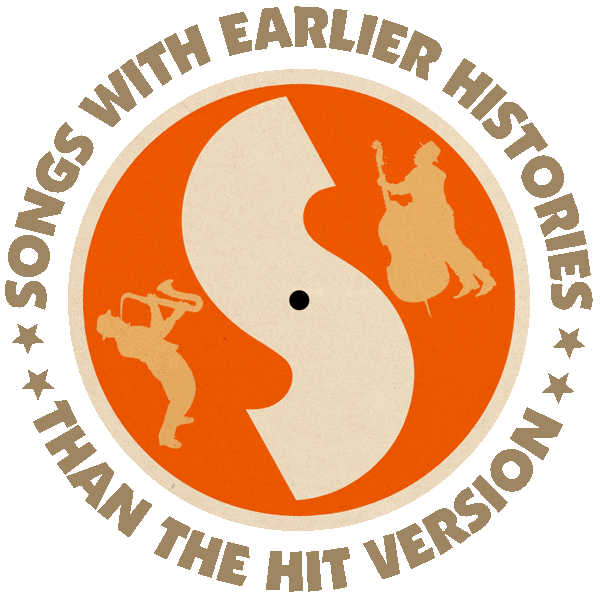First recorded by Benny Goodman & His Orchestra with Helen Forrest (1940).
Also recorded by The Les Paul Trio (1944).
Hit versions by Stan Kenton & June Christy (US #27 1948), Les Paul & Mary Ford (US #1 1951).
From the wiki: “‘How High the Moon’ is a jazz standard written by Nancy Hamilton and Morgan Lewis. It was first featured in the 1940 Broadway revue Two for the Show. The earliest version to be recorded was by Benny Goodman & His Orchestra and released by Columbia Records in 1940, with the flip side ‘Fable of the Rose’. The Les Paul Trio recorded a version released as a wartime V-Disc, with a spoken introduction, issued in 1944 by the U.S. War Department. The best-known recording of the song is also by Les Paul, with Mary Ford, completed on January 4, 1951. It spent 25 weeks (beginning on March 23, 1951) on the Billboard chart, nine of those weeks at #1.”
“Les Paul was also one of the pioneers of the solid-body electric guitar, which made the sound of Rock and Roll possible. Les taught himself how to play guitar and while he is mainly known for Rock music he had an early career in Country music. Paul’s innovative talents included guitar licks, trills, chording sequences, fretting techniques and timing, which set him apart from his contemporaries and inspired many guitarists of the present day. Paul is also credited with many recording innovations. Although not the first to use the technique, his early experiments with overdubbing (also known as sound-on-sound), delay effects such as tape delay, phasing effects and multi-track recording were among the first to attract widespread attention.
“In 1949, Paul was given one of the first Ampex Model 200A reel-to-reel audio tape recording decks by Bing Crosby and went on to work with Ampex to create the eight track ‘Sel-Sync’ machines for multitrack recording. Capitol Records released a recording that had begun as an experiment in Paul’s garage, entitled ‘Lover (When You’re Near Me)’, which featured Paul playing eight different parts on electric guitar. Paul had been shopping his multi-tracking technique, unsuccessfully, since the ’30s. Much to his dismay, Sidney Bechet used it in 1941 to play half a dozen instruments on ‘Sheik of Araby’. Paul’s early recordings were made with acetate discs. He would record a track onto a disk, then record himself playing another part with the first. He built the multitrack recording with overlaid tracks, rather than parallel ones as he did later. By the time he had a result he was satisfied with, he had discarded some five hundred recording disks.
“Among his many honors, Paul is one of a handful of artists with a permanent, stand-alone exhibit in the Rock and Roll Hall of Fame. He is prominently named by the music museum on its website as an “architect” and a “key inductee” along with Sam Phillips and Alan Freed. Les Paul is the only person to be included in both the Rock and Roll Hall of Fame and the National Inventors Hall of Fame.”
ref. Sidney Bechet, “Sheik of Araby” an example of early multi-track (aka “one-man band”) recording (1941):
Les Paul Trio, “How High the Moon” V-Disc recording (1944):
Stan Kenton & June Christy, “How High the Moon” (1948):
Les Paul & Mary Ford, “How High the Moon” (1951):

